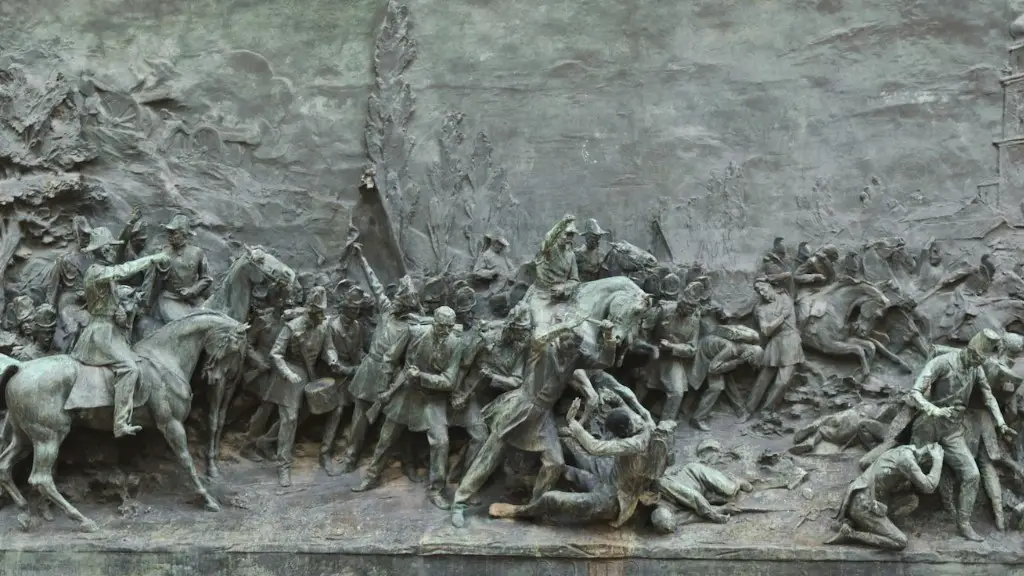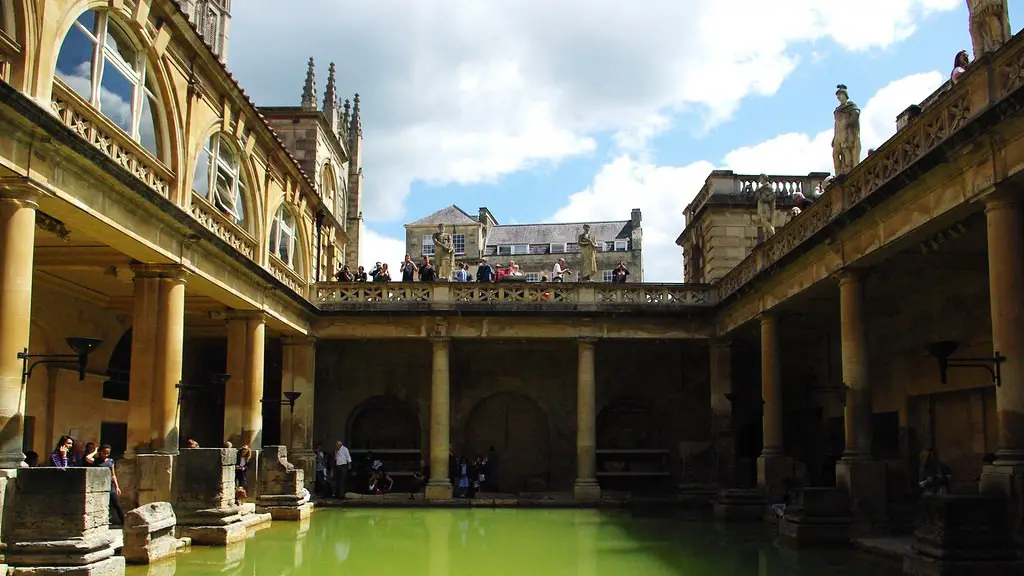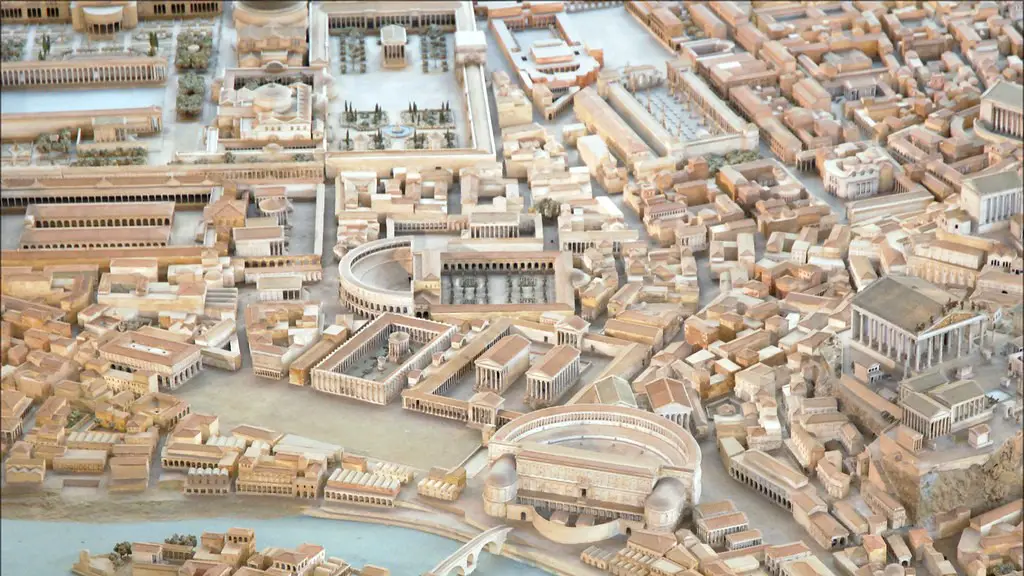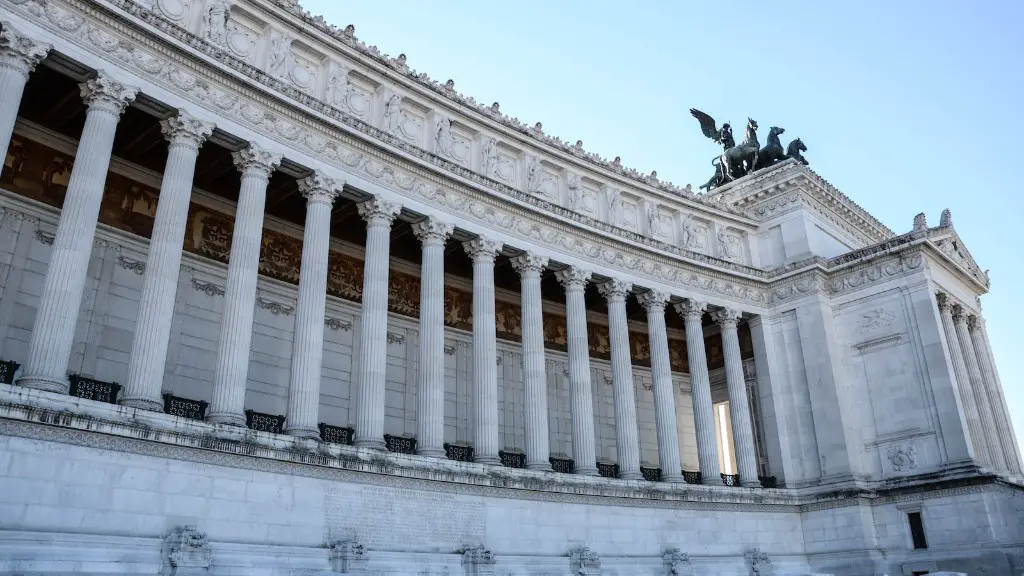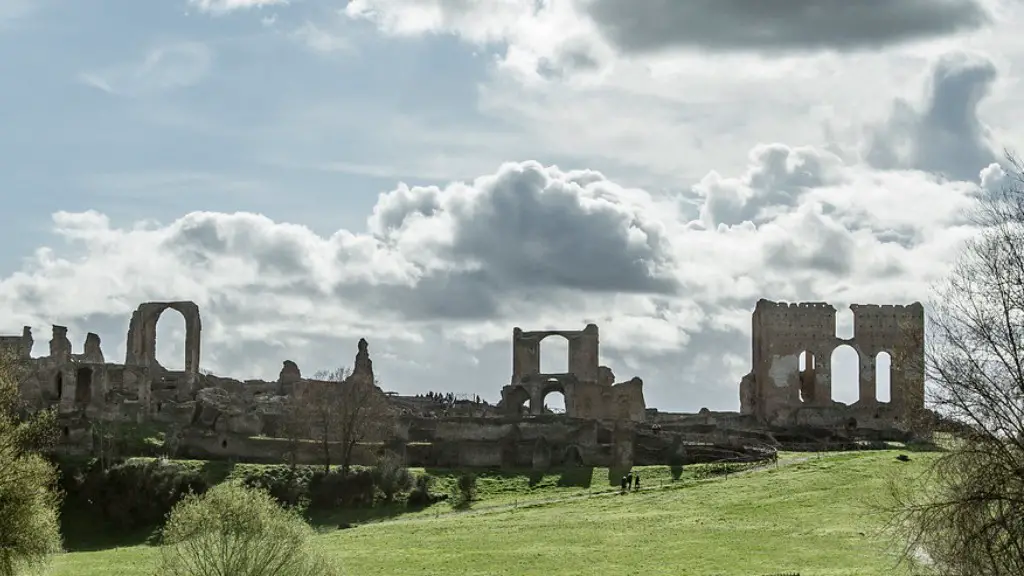The constitution of ancient Rome was an important subject of study in history. It set the rules and regulations by which the Roman Republic was governed. It was in place from the 5th century BCE to the 3rd century CE and had an immense influence on the world today. Despite its age, the Roman constitution was much more complex, and even more influential, than most people think.
The Roman Republic was founded in 509 BCE and was initially led by two consuls who were annually elected and held equal powers. As Rome became more powerful, these consuls gained more authority and ultimate power but always under strict guidelines and codes of the Constitution. Each of the decisions made by the consuls was subject to a lengthy process of negotiations and laws set by the senators, the Senate of Rome, a group of people, who represented the elite of Rome’s citizens.
One of the most important aspects of Rome’s constitution was its need for flexibility. As Rome and its population change, the constitution required a system of balances and checks that could be adapted to fit the needs of the society. This system of government was known as the “mixed constitution” and provided for two legislative assemblies: the Senate and the Popular Assembly (Comitia Centuriata and Tributa). The Senate was the body that proposed laws and was made up of wealthy citizens. The Popular Assembly was made up of citizens from the different classes of society, who voted on issues and passed laws. Each of these assemblies had limited powers, but together formed the government of Rome.
The economy of ancient Rome revolved around the fundamentals of trade and commerce. This economic system was also regulated under the constitution. Taxation was an important factor in regulating the economy and providing the necessary funds for the maintenance of the Roman Republic. Taxes such as a sales tax and a property tax were used to finance public projects, such as the well-known aqueducts and draining of marshlands.
The Roman Constitution was also responsible for the application of justice. Roman law had three basic components: civil law, criminal law and administrative law. Civil law was adopted by the popular assembly and contained everything from contracts to property to family matters. Criminal law was governed by the Senate and dealt with matters such as theft, murder and treason. The administrative law was managed by a group of officials known as praetors, who made sure that all laws were enforced and upheld. All of these elements ensured that justice was fair and equitable.
The Roman Constitution was an important part of the Roman state for over 600 years. It ensured the stability of the state and the fairness of the law. This system of government had immense influence on the world today, as it preached the ideals of liberty and equality and encouraged the development of democracy around the world.
Influence of Roman Constitution
The influence of the Roman constitution in the modern world is undeniable. Its legacy can be seen in the American Constitution and the principles governing modern democracies. Several of the Roman elements, such as limited government, checks and balances, as well as separation of powers, can be seen in modern governments. The idea of equality before the law, which was rooted in the Roman law of XII Tables, has been adopted and enshrined in the constitutions of many modern countries.
The idea of the rule of law was a cornerstone of the Roman legislative system. This ensured the protection of the rights of citizens and maintained a check on the power of those in positions of authority. This system can be seen in modern legal systems, where a set of laws and rules govern the actions of authorities and ensure that citizens are protected from unjust treatment.
The Roman Constitution provided the people of Rome with a system of government by which their society was ruled. It gave power to the people, while also ensuring that the laws of the state were obeyed. This constitution remained a model of governance in the ancient world and still has a great influence in the modern world.
Legacy of Roman Constitution
The legacy of the Roman Constitution has been immense. Its principles were adopted and adapted by many modern nations and its ideals are still influential today. The concept of separation of powers, checks and balances, and limited government can be traced back to the Roman constitution. The idea of rule of law and equality before the law were rooted in the Roman citizenship, which ensured the protection of the rights of all citizens within the state.
Moreover, the Roman legal system was influential in the development of modern legal systems. Its various court systems and its codification of laws provided a usable template for many modern nations. The protection of rights and freedoms of citizens were also enshrined in the Roman Constitution, providing an example of justice and liberty that has been followed by countries around the world.
The influence of the Roman Constitution was immense in the ancient world and still remains influential in the modern world. Its principles and ideals still form the basis of many constitutions, laws and legal systems. The Roman Constitution was one of the most important legacies of the Roman world and cannot be underestimated in its importance in history.
Economics of Ancient Rome
The economics of ancient Rome revolved around trade and commerce and were regulated under the Roman Constitution. Taxes were an important part of the Roman Republic and generated revenue for the state. Taxes such as a sales tax and a property tax funded public projects, and the peasants were compelled to pay taxes in kind, such as grains and olive oil, or in money. The revenue generated by taxes was used to finance public projects and the military.
The Roman economy was highly integrated and the state had a virtual monopoly on trade. Rome set up marketplaces throughout the empire, and merchants were able to trade in all sorts of goods, from farm products to luxury items, under the watchful eye of the state. Furthermore, the state set up a currency system, the denarius, which provided a unified system of exchange and provided stability to the currency. Moreover, Rome built a system of infrastructure, such as roads and aqueducts, which improved the efficiency of trade and transportation and allowed goods to move more freely.
The economy of ancient Rome was a major factor in the success of the Roman Republic. The taxes generated enabled the state to fund its military and public projects, while the integrated market network provided the goods and services necessary to maintain the high standard of living. The economic system of the Roman Republic served as a model for other civilizations and was highly efficient in providing goods and services that contributed to the overall success of the Roman State.
Social Structure of Ancient Rome
The social structure of ancient Rome was highly stratified and organized along class lines. This system consisted of a patrician class, or the elite, and a plebeian class, the common people. The patricians were divided into two tiers, the aristocracy and the equites. The ruling classes controlled most of the wealth, power, and influence within the Republic. The plebeians, on the other hand, had limited rights, such as the right to vote, and could not participate in politics or hold public office. This social hierarchy was reflected in other aspects of Roman life, such as marriage and education.
The class system of Rome also formed the basis for the social structure. The two main classes were the patricians and the plebeians, with the patricians mainly being in the upper classes. This social structure was further divided into the ruling classes and the common people. Additionally, the plebeians were further divided into the proletarii and the freedmen. All of these classes had their roles and functions in Roman society, which contributed to its overall stability.
The social structure of ancient Rome was an integral part of the success of the Republic. This system of classes provided the stability that was necessary for the Republic to be successful. Furthermore, it ensured that the elite had the power and authority to make decisions, while the common people had the right to voice their concerns and have a say in public affairs.
Military of Rome
The military of Rome was an important part of the success of the Republic and was essential in maintaining its power and stability. The Roman Legion was the primary military force of the Republic and was comprised of citizen-soldiers. This force was armed with swords, spears, javelins, and other weapons. The legionaries were the backbone of the Roman Army and were highly disciplined and loyal. Furthermore, they served as a constant reminder of the power of the state and its ability to protect citizens.
The legions were trained and disciplined to fight in formations, and were equipped with a variety of weapons and tactics. The primary tactic employed by the Roman military was the use of the phalanx, which was a formation whose warriors formed a wall of shields to protect against the enemy. The Roman military was also highly skilled in siege warfare and could use a variety of weapons and tactics, such as battering rams, catapults, and explosives, to breach enemy fortifications.
The military of Rome was instrumental in the success of the Republic as it provided a mechanism for protecting citizens and defending against external enemies. The highly disciplined and organized Roman legions were a formidable force which could be deployed quickly to any part of the empire and could be relied on for the protection of the state. Furthermore, the military served as a symbol of power and prestige, and its success on the battlefield was crucial to the success of the Roman Republic.
